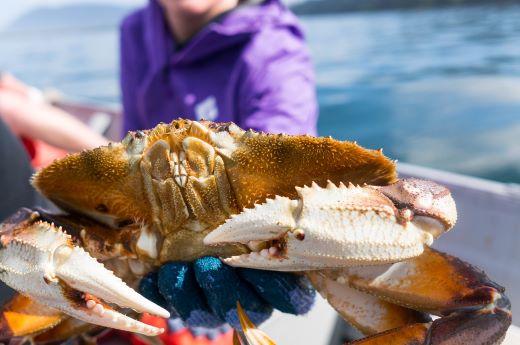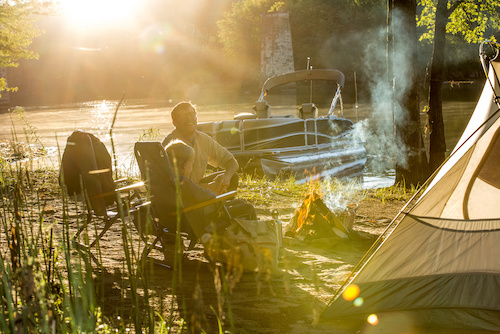Are you thinking about going crabbing this summer? If not, you’ll want to start, as there’s nothing tastier than eating your freshly caught crabs with a side of drawn butter.
Of course, catching these crustaceans is both an art and a science. In this post, we’re revealing everything you need to know about crabbing off a boat! Keep reading to discover what to bring, safety tips, and where to go crabbing this summer.
4 Crabbing Tips for Beginners
Ready to embark on your crabbing adventure but still trying to figure out where to start? Check out these four crabbing tips for beginners:
1. Know Your Territory
Different types of crabs are found in different geographical areas. Therefore, the type of crab you catch will depend on where you toss your pots:
- Blue Crab: Florida, Delaware, Maryland, Eastern Virginia
- Blue King Crab: Alaska
- Box Crab: Washington
- Dungeness Crab: Washington, Oregon, California
- Golden King Crab: Alaska
- Jonah Crab: Maine, Rhode Island, Massachusetts
- Red King Crab: Alaska
- Red Rock Crab: Washington, Oregon, Northern California
- Rock Crab: Maine
- Snow Crab: Alaska, Maine
- Stone Crab: North Carolina, South Carolina, Georgia, Florida
Before boarding your crab boat, familiarize yourself with the local crabbing rules and regulations. That information impacts the type of crabbing equipment you can use and the size of crabs you can catch.
2. Bring the Right Equipment
Before embarking on your crabbing trip, you must invest in the right equipment. Here’s a brief overview of what you’ll need:
- Trap
- Pull line
- Float
- Bait bag and bag tiedown
- Bushel or basket
- Caliper
- Bait
Additionally, some crabbers will want to invest in the following:
- Bushel basket topper: This allows you to fill the bushel when measuring the legal take-home limit.
- Turtle excluder: This ensures you don’t accidentally snag some turtles in your catch.
- Trap with 1+ escape rings: These are designed to let young crabs (that are illegal to catch) escape.
- Crab net and crab box: To hold crabs in the water until they’re ready for transport.
- Weights: Add to your trap to ensure the current doesn’t take it.
3. Rigging Your Trap
How you rig your crab trap will make or break your crabbing experience. For optimal results, choose a sturdy pull line designed for saltwater that can hold the weight of your trap, bait, and potential crabs. (We recommend using a leaded line.)
Then, ensure your rope is long enough for the depth of your crabbing location. If your rope floats — meaning the trap isn’t heavy enough — you’ll want to arm it with weights.
Most places require tying a brightly colored float to the end of your rope. This helps you — and other boaters — spot it in the water. Don’t forget to label it with your name and contact info.
Then, secure a bait bag inside the trap. If you want to catch more crabs, consider placing the bait bag inside a bait box, as this slows the eating process. And if you plan on leaving your trap for longer than a day or two, we recommend weighing it down so that the current doesn’t drag it away.
4. Making the Catch
Finally, it’s time to haul your catch! We recommend investing in an electric or hydraulic puller to conserve energy and avoid overstraining yourself. Then, you’ll need to weigh your crabs individually and sort them. (You can only keep crabs that are above the legal weight). Toss any crabs that are below the legal weight, as well as pregnant females.
Place the crabs in your holder, basket, or bushel, and secure them with a lid. If not, expect a fine from Fish, Game, and Wildlife. Either count or weigh your crabs and record the amount, as you can’t exceed the legal limit.
Next, you’ll need to preserve your catch until you return to shore. Fill a cooler with ice and place the crabs on top to keep them alive in transit. The ice will slow their metabolism and keep the crabs alive until you arrive at your destination.
For longer transit, place your crabs directly on the bottom of an empty cooler. Soak a towel with water from their natural habitat and put it on top. Then, cover the towel with ice. Make sure to keep replenishing the water, as this continually supplies the crabs with oxygen.
Pro Tip: Keep the crabs away from wind or sun – both are harmful to them.
How to Find the Perfect Cooler for Your Boat
The Bottom Line (Pun Intended)
After reading this post, we hope you understand the basics of crabbing off a boat!
As experts in the industry, we’re always offering maintenance tips, excursion advice, and lifestyle inspiration. Head to our website’s Articles and Inspiration section for more boating resources like this one.


